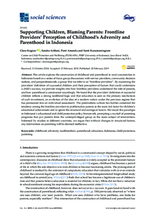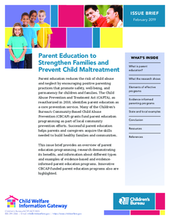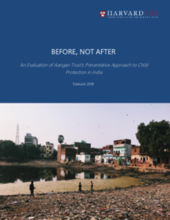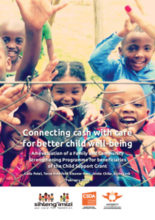Displaying 281 - 290 of 943
This open access article explores the construction of childhood and parenthood in rural communities in Indonesia based on a series of focus group discussions with service providers, community decision makers, and paraprofessionals; a group that the authors refer to as “frontline providers”.
This article examines the professional identities of family therapists employed by Family Counselling Services (FCS) in Norway and their experiences providing therapeutic services to parents whose children are placed in public care.
In this video, State Representative Rena Moran and State Senator Jeff Hayden of the U.S. state of Minnesota introduce legislation that would establish guidelines to prevent the removal of African American children from their families.
This webinar includes presentations from the Democratic Republic of Congo and the Philippines, sharing experiences designing, managing and evaluating parenting interventions to reduce violence against children and adolescents by parents and caregivers.
This issue brief provides an overview of parent education programming, research demonstrating its benefits, and information about different types and examples of evidence-based and evidence-informed parent education programs.
According to this report, children of prisoners in the UK are an "'invisible’ group – currently, children are not systematically identified or assessed when a parent goes to prison." The report aims to improve understanding of: who this ‘invisible’ group of children is; the extent, nature and root causes of their poorer outcomes; and how a whole family approach can be used to improve outcomes for children and parents and what needs to change.
This study documents and evaluates the harm prevention work carried out by the children’s rights nonprofit Aangan Trust since late 2015 in Konia, a peri-urban slum area in Varanasi, a large city in the Indian state of Uttar Pradesh.
This report presents the findings of an intervention study evaluating the short-term outcomes of Sihleng’imizi Family Programme, an evidence-based preventative social-educational intervention.
In order to gain insight into the role that decision-making plays in family preservation practice, the authors of this article studied decision-making within a family preservation (FP)-intervention program provided by the Expertise Center.
In the present research, the aim was to develop, implement, and examine the effectiveness of an education program for mothers for the prevention of child neglect.





